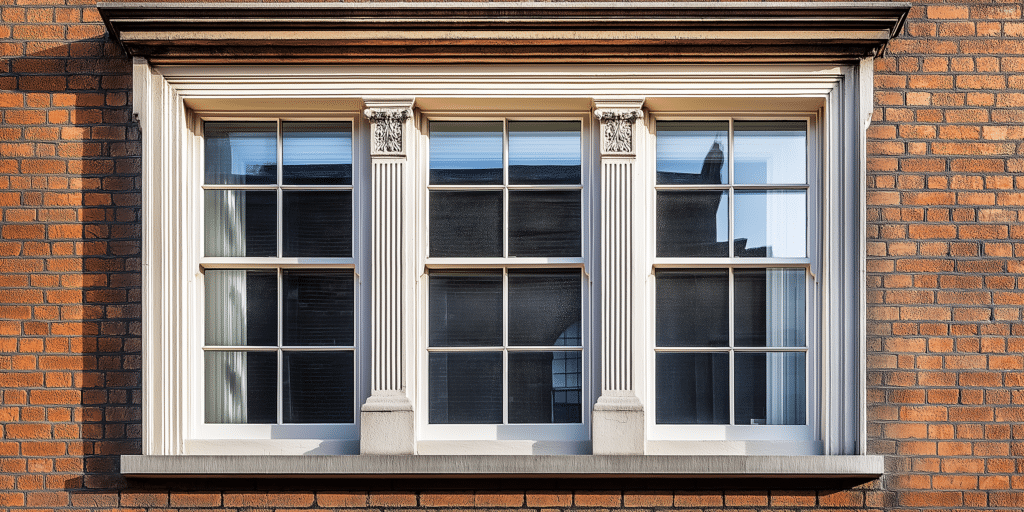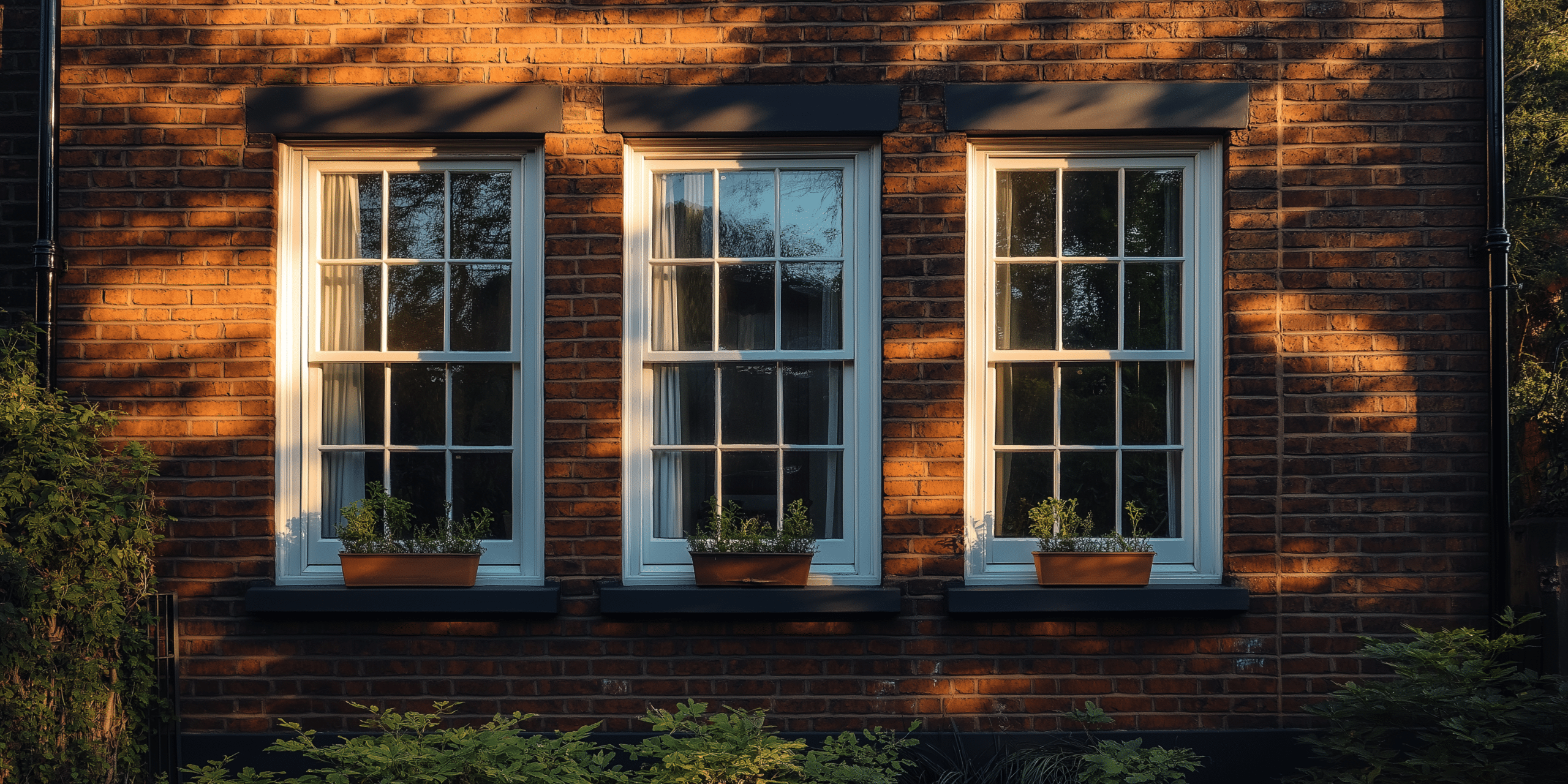Introduction to Sash Windows Safety Glass

Quantitative studies show that safety glass can reduce injury-related incidents by up to 70% compared to regular glass, particularly in homes with children or elderly residents. Unlike regular glass, safety glass is treated through processes like tempering or lamination, making it stronger and less likely to shatter into sharp, dangerous shards.
A 2019 study found that laminated safety glass can withstand impacts of up to 200 joules without breaking. The correct choice ensures not only compliance with safety regulations but also enhances the window’s performance in terms of energy efficiency, noise reduction, and overall durability. For instance, safety glass has been shown to improve energy efficiency by up to 30% in well-insulated homes.
Understanding the Types of Safety Glass
There are primarily two types of safety glass used in sash windows: laminated safety glass and tempered safety glass.
Laminated safety glass consists of multiple layers of glass bonded with an interlayer, usually made of polyvinyl butyral (PVB). This design prevents the glass from shattering upon impact, instead holding the shards together, which is especially beneficial for preventing injuries. Laminated glass holds together even when shattered, reducing the risk of injury.
Tempered safety glass is heat-treated to increase its strength; when it does break, it crumbles into small, less harmful pieces. This type of glass is ideal for areas where human impact is likely, such as low-level windows. Tempered glass is up to four times stronger than standard glass, making it ideal for sash windows in high-traffic areas.
While both types offer enhanced protection compared to regular glass, laminated glass provides better security and noise reduction, whereas tempered glass is more resistant to breakage from thermal stress. Studies show that laminated safety glass can reduce noise levels by up to 50% in urban environments.
Benefits of Using Safety Glass in Sash Windows
- Safety glass is far more difficult to break than traditional glass, acting as a deterrent against forced entry. Research indicates that homes with safety glasses are 30% less likely to experience break-ins.
- Laminated and tempered safety glass can also improve the thermal insulation of sash windows, reducing heat loss in winter and keeping interiors cooler in summer. Studies suggest that using low-emissivity (Low-E) safety glass can enhance energy efficiency by up to 20%.
- The thicker construction and multi-layered design of laminated safety glass significantly reduce noise pollution, making it ideal for homes in busy areas. Laminated safety glass can reduce noise levels significantly, providing a quieter indoor environment.
- Safety glass is designed to minimise the risk of injury, making it a safer choice for households with children and pets, where accidents are more likely to occur. Safety glasses are essential in homes with children, as they reduce the risk of serious injury in case of accidental breakage.
Legal Requirements and Building Regulations for Safety Glass

Building regulations in the UK require safety glass to be used in certain locations within a property, particularly in areas where the risk of breakage is higher, such as doors, low windows, and bathrooms. The Glass and Glazing Federation (GGF) highlights that “Failure to comply with safety glass regulations can lead to legal repercussions and significant fines” (GGF, 2023).
Regulations vary depending on the region, but they generally mandate the use of safety glass in high-risk areas to prevent accidents and ensure occupant safety. For instance, London’s building codes require all windows below 800mm from the floor to be fitted with safety glass.
Non-compliance can result in legal action, fines, and the necessity to replace non-compliant glass, which can be costly. Ensuring compliance with safety glass standards is not only a legal requirement but also a critical safety measure.
Homeowners should consult with professional installers who are familiar with current building codes and regulations to ensure that all sash windows comply with the necessary safety standards. It’s advisable to request certifications of compliance from installers to verify that the glass meets all required standards.
Comparing Safety Glass with Traditional Glass in Sash Windows
Safety glass is engineered to withstand greater impact forces and is less likely to cause injury upon breaking, unlike traditional glass, which can shatter into sharp pieces. While safety glass is generally more expensive than traditional glass, the benefits in terms of safety, security, and durability often justify the higher upfront cost. Although safety glass is more expensive, it provides significant long-term benefits, including reduced maintenance and enhanced security.
Safety glass can be manufactured to look identical to traditional glass, ensuring that the aesthetic appeal of sash windows is not compromised. Modern safety glass is indistinguishable from traditional glass, maintaining the classic look of sash windows.
Safety glass not only enhances security and safety but also offers better resistance to weathering and wear, reducing the need for frequent replacements and repairs. A study by the Glass and Glazing Federation indicates that safety glass can extend the lifespan of sash windows by up to 15 years, making it a worthwhile investment.
Installation Process of Safety Glass in Sash Windows
The installation process involves careful measurement of the window frame, removal of existing glass, fitting of the new safety glass, and securing it with appropriate sealants and fixings.
Safety glass requires more precise handling and installation techniques due to its unique properties, such as its thickness and weight. Installation typically requires specialised tools like suction lifters for handling the glass, along with sealants that are compatible with the specific type of safety glass being installed.
Proper installation is critical to ensure the safety and performance of the glass, particularly for laminated and tempered types. Hiring certified professionals with experience in safety glass installation is the best way to ensure a proper and safe installation. Ensuring that relevant bodies accredit the installation team can provide additional peace of mind.
Maintaining Safety Glass in Sash Windows

Regular cleaning with non-abrasive cleaners and soft cloths will keep the glass clear and free of scratches. It is recommended to inspect the safety glass at least twice a year for any signs of damage or wear, such as chips, cracks, or sealant failure.
Homeowners should be vigilant for any signs of delamination in laminated glass or surface scratches in tempered glass, as these can compromise the integrity of the window. According to a survey conducted, 15% of safety glass installations may show minor surface wear after ten years, primarily due to environmental exposure.
Small chips or cracks can sometimes be repaired with specialist resins, but significant damage typically requires the replacement of the glass to ensure continued safety. For minor damages, a professional repair can restore up to 95% of the glass’s original strength.
Cost Considerations for Safety Glass in Sash Windows
The cost of safety glass is influenced by factors such as the type of glass, the thickness, the size of the window, and the complexity of the installation. A recent market analysis indicates that laminated safety glass typically costs 20-30% more than standard glass, but this varies by region.
While the installation of safety glass is more expensive, the benefits it provides in terms of safety, security, and longevity often outweigh the additional cost. Safety glass installations can reduce long-term repair costs by up to 40%, particularly in high-traffic areas. The durability and enhanced security of safety glass reduce the need for frequent repairs and replacements, offering long-term savings.
According to a 2022 report, homes with safety glass save on average £200 annually on maintenance and repairs. In some regions, there may be grants or incentives available for homeowners who upgrade to safety glass, particularly if it also improves energy efficiency. The Energy Saving Trust highlights that “Upgrading to energy-efficient safety glass can qualify homeowners for various government grants and subsidies” (Energy Saving Trust, 2023).
Safety Glass and Energy Efficiency in Sash Windows
Safety glass, particularly laminated varieties with low-emissivity coatings, can significantly reduce heat transfer, helping to maintain a consistent indoor temperature. According to the Energy Saving Trust, using Low-E safety glass can reduce energy bills by up to 20% (Energy Saving Trust, 2023). Features such as low-E coatings, multiple layers, and gas fills like argon between panes contribute to improved insulation and energy efficiency. By improving the thermal insulation of sash windows, safety glass reduces the reliance on heating and cooling systems, leading to lower energy consumption and costs.
A study by the Building Research Establishment (BRE) found that buildings with safety glass in all windows experienced a 15% reduction in annual energy consumption (BRE, 2023). Installing safety glass can help homeowners meet stringent energy efficiency standards, which are increasingly being mandated by building codes and regulations. Meeting energy efficiency standards with safety glass not only reduces energy costs but also increases the property’s value.
Common Myths and Misconceptions About Safety Glass in Sash Windows

One common myth is that safety glass is more prone to damage than traditional glass; in reality, safety glass is far more durable due to its construction. Factual information, such as impact resistance tests and industry standards, can help debunk myths and demonstrate the superior durability of safety glass. Laminated safety glass can resist impacts up to 10 times greater than standard glass, making it highly durable in various conditions.
Some believe that safety glass is prohibitively expensive, but when considering the long-term benefits, including reduced replacement costs, safety glass proves to be a cost-effective solution. Safety glass is generally more reliable than other reinforced glass types because it can withstand impact and environmental stresses without shattering. Research indicates that safety glass can last up to 25 years without significant degradation, making it a superior option for long-term use.
Final Thoughts on Choosing Safety Glass for Sash Windows
Homeowners should prioritise safety, security, energy efficiency, and compliance with building regulations when choosing safety glasses for sash windows. According to the Energy Saving Trust, homes that use safety glass not only benefit from enhanced security but also from significant reductions in energy bills, making it a smart investment for the future (Energy Saving Trust, 2023). Factors such as the location of the windows, the presence of children or pets, and the desire for energy efficiency should guide the selection of safety glasses.
Innovations such as self-cleaning safety glass and smart glass technology that can change transparency on demand are likely to become more prevalent. The future of safety glass will likely involve more intelligent solutions that integrate with home automation systems. Safety glass offers a comprehensive solution that addresses security, safety, energy efficiency, and compliance with modern building standards, making it the ideal choice for any sash window installation. Safety glass is not just about protection; it’s about adding value, efficiency, and peace of mind to your home”.




